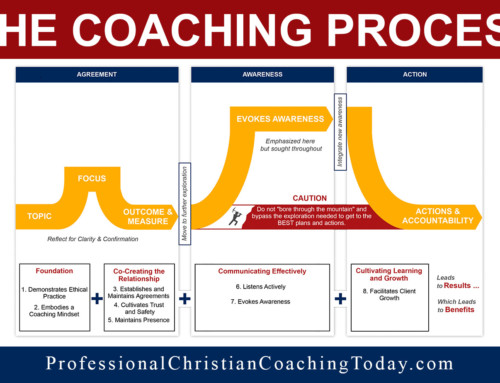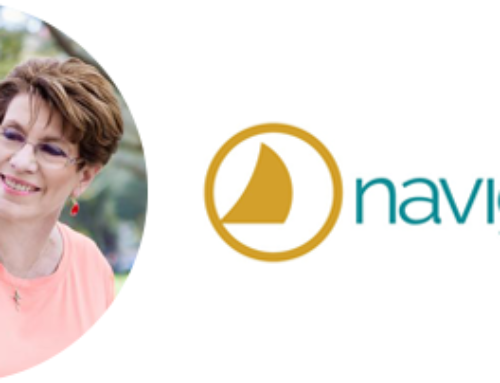It’s a few months into the New Year, and if statistics are correct, about half of of the people who made New Year’s resolutions will have already broken them.
Change is hard. So hard in fact, it’s one of the most common reasons people hire a coach. After all, coaches are change experts, right?
But coaching is far more than just another approach to change; it’s an exciting new profession grounded in research on creating long-term change. And research reveals that the recommendations and strategies necessary to achieve lasting change mirror, almost exactly, the core competencies and strategies used in life coaching.
Further, it indicates that people are motivated to change behavior by using an extrinsic (outside-in) or intrinsic (inside-out) approach, or an X-driven or I-driven approach to change, respectively.
An Extrinsic Approach to Change
An external or X-driven approach to change tends to rely on rewards or punishments as a motivator for change. These may be self-imposed or created by someone else. For example, others’ opinions, values, beliefs, and theology, can easily influence an X-driven client. They may find it difficult to identify what values they hold and what they really want.
That’s why X-driven clients may attempt to solicit your advice or look to you to solve their problem. Or they may simply hire you to serve as an accountability partner.
However, growing research suggests an X-driven approach to long-term change is ineffective. It narrows your focus, which impedes the creativity necessary for facing challenges, problem solving, and brainstorming. Using an X-driven approach can result in “hitting a wall” and clients getting “stuck.”
An Intrinsic Approach to Change
In contrast, using an I-driven approach to change can be described as a “being” vs. “doing” approach. It flows out of who we are rather than what we do.
Clients driven internally find completion of a task naturally motivates them, because they have found a way to connect it to one of the key innate desires we all share:
- Autonomy —freedom to choose their tasks, time, technique, and team
- Mastery — desire to learn and grow to overcome a challenge
- Purpose — need to find meaning to life and everything in it
- Relationship — connectedness to others
When the desires of our heart: autonomy, mastery, purpose, and relationship are satisfied, we’re motivated, productive, and happy. We achieve more and live richer lives. The behavior fuels motivation rather than drains it.[i]
So, how can we help our clients move beyond an X-driven approach to change when it may be all they have ever known? How can we help clients reconnect with their heart?
Practical Coaching Strategies for Lasting Change
Here are some practical coaching strategies designed to facilitate lasting change, using an inside-out approach:
Facilitate client autonomy over the change.
- Facilitate successful change by ensuring the change originates with the client.
- Draw what need to happen and how it needs to happen from your client, using open-ended questions.
- Focus on “finding the bright spots,” i.e., successful efforts in the past worth emulating.
- Consider asking: What has worked? What do you need to do differently? What’s working and how can you do more of it?[i]
Help the client master simple and attainable goals.
- Avoid vague goals. For example, “Eat a healthier diet.” Instead, identify clear action steps. For example: “Choose skim milk over 2% milk.”
- Avoid too many options.
- Avoid too big of a goal[ii]
- Consider asking: How can you narrow that goal? What one step can you take today toward reaching your goal? How will you overcome obstacles in attaining your goal?
Connect new behaviors to purpose, values, and mission.
- Introduce these concepts to your x-style clients.
- Provide practical tools to identify purpose, values, and mission
- Explore recurring themes
- Consider asking: When have you felt most alive? What makes you lose track of time? When in your life have you felt you were firing on all cylinders? What do you value most?
Connect new behaviors to relationship.
- Help the client pair new behaviors to relationship with others. For example, study groups motivate learning through relationship.
- Connect change to its impact on important relationships. For example, help clients link improving their health to living longer for their grandchildren.
- Encourage sharing wins with others. For example, many weight loss aps and fitness apps allow you to share on social media and receive feedback from others.
- Consider asking: How will this new behavior affect your relationship with your spouse? Your children? What will your relationship with your spouse/children look like in five years if nothing changes?
The tools you use for change matter. And as a trained life coach, you have the tools people need to make lasting change in their lives and their relationships.
How can you use these tools to help clients achieve lasting change?
Free Coach Training!

Learn from the BEST Christian Coaches!
Whether you’re exploring Christian coaching, a brand-new or seasoned coach, this powerful resource will deepen your learning, skill, and effectiveness.




